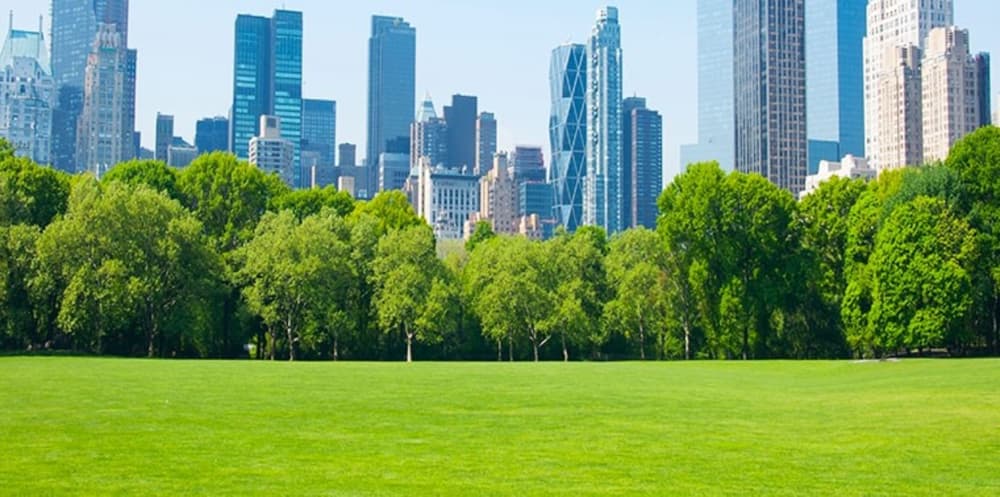Urban green spaces like parks and gardens play a crucial role in boosting both physical and mental health. They encourage exercise, improve air quality, reduce stress, and enhance mood and social connections. Scientific studies confirm that access to greenery lowers risks of depression, anxiety, and chronic diseases.
The Impact of Urban Green Spaces on Physical and Mental Health: Nature’s Remedy in the Concrete Jungle
Written by Kashish Rajput

With cities growing more rapidly on every continent, increasingly more individuals than ever before are residing in high-density urban areas. This rapid urbanization has numerous negative health effects for the inhabitants, including enhanced exposure to urban air pollution, long-term stress from the fast city way of life, and tendency towards physical inactivity through lack of recreational land.
In sheer skyscraper walls, chaotic streets, and pervasive din, urban open spaces like urban parks, botanical gardens, street-lined avenues, and linked neighborhood greenways stand out as critical sanctuaries providing much-needed respite and renewal.
These little pockets of nature within the city not only add beauty to the city but are also potent agents for improving physical health and mental well-being. Based on an increasingly large base of scientific studies, this article explores the wide-ranging advantages of urban green space and the imperative to carefully incorporate natural areas into city planning in order to create more livable, healthy, and sustainable cities.
Breathe Life into Cities: What are Urban Green Spaces?
Urban green spaces are areas in the city that have been dedicated as natural or almost natural places. They can be city woods, parks, green roofs, botanical gardens, or pocket parks. In addition to appearance, urban green spaces are also gathering places for the community that facilitate recreation, socialization, and ecological balance.
Physical Health Benefits: More Than Fresh Air
- Promoting Physical Activity: Public green space and public parks are public spaces for exercising ranging from jog trails and bike trails to playgrounds and green spaces. Regular outdoor physical exercise helps combat obesity, heart disease, diabetes, and other lifestyle diseases.
- Improved Air Quality: Plants and trees purify the air of pollutants, reducing contact with unhealthy particles and developing healthy lungs. Urban parks can lower urban temperatures, avoiding heat-related illnesses during hot summer weather.
- Improved Immune Function: Outdoor activity has also been observed to improve immune function through exposing the individual to diverse microbiomes and reducing inflammation.
Mental Health Benefits: Nature's Relaxant Effect on the Mind
Reduced Stress
Time and again, studies confirm that green time reduces cortisol, the stress hormone. Nature settings relax individuals and reduce stress indicators.
Green exposure enhances mood, joy, and concentration and creativity. It benefits particularly children, students, and employees in mental exhaustion.
Social Connectedness and Community Health
Green spaces are public spaces in which individuals gather, establish social relations, avoid loneliness, and increase satisfaction with life.
Scientific Evidence: Urban Nature's Healing Power
Empirical data from all disciplines bear witness to the healing power of urban green spaces for health:
In 2018, The Lancet Planetary Health found that proximity to green space was linked with lower depression and anxiety risk.
Green space-raised children have enhanced focus and fewer behavioral problems, as a study in Environmental Health Perspectives found.
Green space interventions are linked with lower hospitalization for cardiovascular disease and respiratory disease.
Designing Healthier Cities: The Future of Urban Greenery
Urban policy makers and planners are increasingly integrating green infrastructure into the city agenda with an aim to advance the public's health. Theoretical ideas of green corridor, city forest, and community garden are beginning to serve as the pillars of urban sustainable planning.
The initiatives not only advance individual health but also biodiversity, climate resilience, and social justice.
Conclusion: Green Spaces as Essential Public Health Assets
In an era where urbanization is the dominant pattern, inviting nature to the city is no longer a luxury but a priority. Urban green spaces offer a low-cost, natural solution to our most pressing public health issues in physical activity, mental health, and social integration. Green infrastructure investment is, therefore, investment in healthier, happier, more resilient city dwellers.